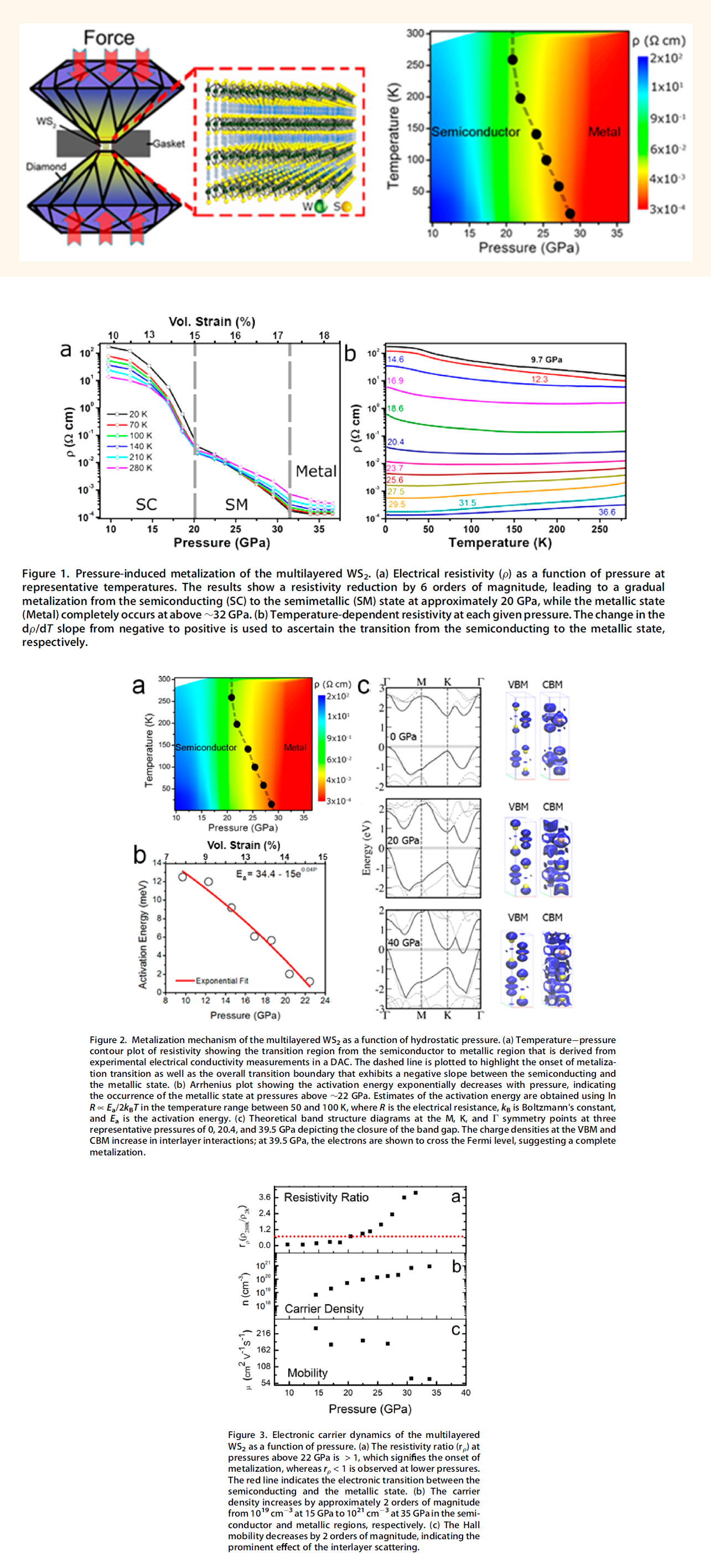压力调控WS2的载流子浓度、迁移率及其导电性质
(Pressure-Modulated Conductivity, Carrier Density, and Mobility of Multi layered Tungsten Disulfide)
A. P. Nayak, Z. Yuan, B. X. Cao, J. Liu, J. J. Wu, S. T. Moran, T. S. Li, D. Akinwande, C. Q. Jin and J. F. Lin
Acs Nano, 9, 9117 (2015)
Tungsten disulfide (WS2) is a layered transition metal dichalcogenide (TMD) that differs from other two-dimensional (2D) compounds such as graphene due to its unique semiconducting, tunable-band-gap nature. Multilayered WS2 exhibits an indirect band gap Eg of ~1.3 eV, along with a higher loadbearing ability that is promising for strain-tuning device applications, but the electronic properties of multilayered WS2 at higher strain conditions (i.e., static strain >12%) remain an open question. Here we have studied the structural, electronic, electrical, and vibrational properties of multilayered WS2 at hydrostatic pressures up to ~35 GPa experimentally in a diamond anvil cell and theoretically using first-principles ab initio calculations. Our results show that WS2 undergoes an isostructural semiconductor-to-metallic (S-M) transition at approximately 22 GPa at 280 K, which arises from the overlap of the highest valence and lowest conduction bands. The S-M transition is caused by increased sulfur_sulfur interactions as the interlayer spacing decreases with applied hydrostatic pressure. The metalization in WS2 can be alternatively interpreted as a 2D to 3D (three-dimensional) phase transition that is associated with a substantial modulation of the charge carrier characteristics including a 6-order decrease in resistivity, a 2-order decrease in mobility, and a 4-order increase in carrier concentration. These distinct pressure-tunable characteristics of the dimensionalized WS2 differentiate it from other TMD compounds such as MoS2 and promise future developments in strain-modulated advanced devices.
